Today’s consumers rely on their mobile devices more than ever — American adults spent an average of three hours and 30 minutes a day using their phones’ internet capabilities in 2019. That’s a lot of scrolling. Unsurprisingly, QR codes, which go hand in hand with mobile technology, have become increasingly ubiquitous. Convenient, environmentally friendly, and versatile, they’re a powerful addition to every marketer’s toolkit.
Here are some ideas on how to get started using QR codes in your next marketing campaign:
Create QR Codes in Minutes
1. Drive data collection from an online form
Whether you’re conducting a survey or a poll, asking people to sign up for an email list, taking orders, or collecting some other type of data, it’s often necessary to get information from customers via some kind of online form.
In 2011, the grocery retail giant Tesco wanted to amplify its presence in the South Korean market. The challenge was to reach a bustling, commuter-centric customer base and expand the business without investing in more brick-and-mortar stores.
To accomplish this, Tesco placed virtual stores in high-traffic public commuting locations, such as subways and bus terminals, where customers could scan a QR code for an item and enter their information to schedule a delivery to their home. Tesco’s online revenue reportedly increased by 130 percent in South Korea.
Just so you know…
Jotform makes it easy to create a QR code for your online form. All you have to do is select Share options from the Publish tab in the Form Builder to download a QR code for your form. You can read more about linking your form to a QR code here.
2. Direct customers to a website
The most common purpose of QR codes is to direct users to a landing page, which may include a signup page, a campaign page, or even a product catalog. The possibilities are endless — your imagination (or perhaps your dev team) is the limit.
A few years ago, L’Oreal launched a campaign where they placed QR codes in New York taxis during the city’s annual fashion week. It was a great way to encourage potential customers to browse and shop its products while riding in a taxi.
Pro Tip
Make sure your QR code directs users to your campaign’s landing page rather than the homepage. This way, they won’t have to navigate to the correct page. Also, double-check that your website is mobile friendly.
3. Deliver instant coupons, freebies, and offers
One popular way to use QR codes is to deliver special discounts to shoppers. Instead of having customers clip a printed coupon, you can create a QR code that saves the offer directly to the user’s mobile wallet. Users can then provide the digital coupon during checkout at a physical retailer.
Another great alternative is to create a QR code that takes users to an online store. Instead of asking users to manually enter a promo code, you can set it up so the discount is already applied at checkout.
During the London Olympics, Turkish Airlines ran a contest where they placed posters with QR codes on bus stops around the city. Users who scanned the code automatically entered themselves into a competition to win free plane tickets to various destinations.
Pro Tip
Promotional QR codes are so versatile — you can integrate them into any marketing collateral, such as print ads, direct mail, or even a giant outdoor billboard. Don’t forget to write some enticing copy about the discount or freebie to encourage potential customers to scan the code.
4. Direct customers to social media pages
Word-of-mouth marketing is so crucial nowadays — 92 percent of consumers consider online reviews when they’re searching for local businesses. So why not turn your biggest customers into advocates for your company on social media?
Simply include a QR code on product packaging along with a brief message encouraging customers to scan the code and leave a review. Instead of manually searching for your business’s page on review platforms like Yelp or Facebook, the scanned code will redirect them there automatically.
In 2011, Verizon launched a campaign in San Francisco that placed QR codes in Verizon stores with copy persuading in-store customers to scan the code and share a personalized link on their social media pages. If any of their friends purchased a phone using these links, Verizon would give the referring customer a free phone. During that one-week promotion, Verizon generated $35,000. It was a win-win for both Verizon and its customers.
Pro Tip
Incentivize your customers to leave a review or follow your page by providing them with a token of appreciation; a discount or freebie never hurts.
5. Download or launch apps
Using QR codes is a great way to incentivize customers to download and use your branded apps. An ad agency in the UK developed a creative campaign where they combined QR codes with greeting cards to create the modern equivalent of a mixtape. Each greeting card included a giant QR code in its design — it redirected the recipient who scanned the code to a Spotify playlist that the sender got to customize.
Pro Tip
Context is key — the QR code should direct users to apps that complement the ad or printed material where the code appears.
6. Conduct scavenger hunts
With out-of-home (OOH) advertising, the world is your canvas. Consumers love it, too — 71 percent of shoppers report that digital billboards grab their attention more than online ads do. Pairing outdoor spaces with QR codes can enable innovative marketing ideas, such as scavenger hunts and augmented reality experiences.
In 2011, Mercedes-Benz launched a competition where they stuck QR codes all over the exteriors of the newest Mercedes-Benz A-Class. The company took the prototype fleet out for a spin, and users who scanned the codes could collect badges. Those who gathered four or more trophies were eligible for a raffle to win a trip to the world premiere of the new A-Class.
Pro Tip
The best part about using QR codes in your marketing campaign is the convenience of tracking and reporting. With web analytics and other campaign measurement tools, marketers can easily track the number of scans over time, capture geographic data, and gather additional handy information to measure return on investment (ROI).
No matter how you decide to use QR codes in your next marketing campaign, they’re a great way to promote interaction and engagement. They’re also efficient. As long as you’re striving to make your customers’ mobile experience a unique one, you can’t go wrong with this convenient tool.




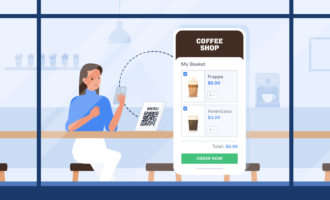









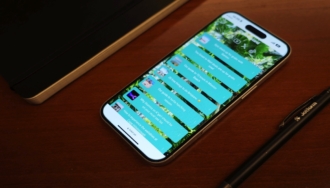
















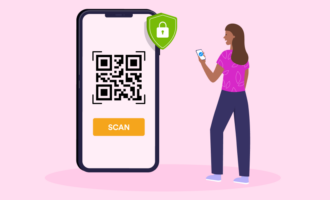







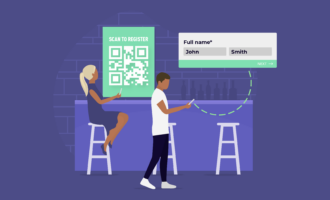


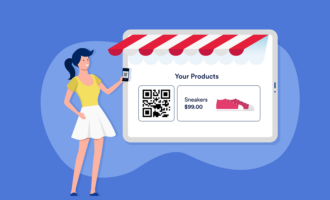















Send Comment:
1 Comment:
More than a year ago
QR Codes are amazing in that they can do so many things in a small package. The sky is the limit as long as you're creative.